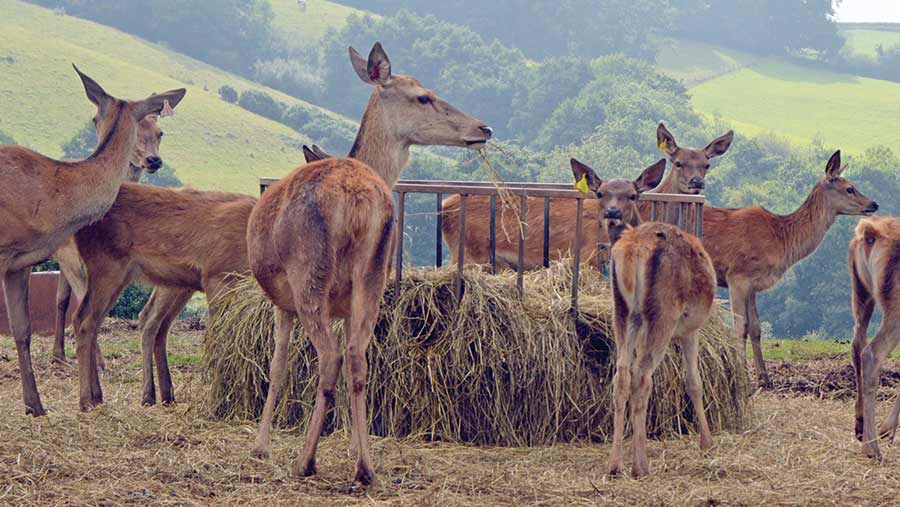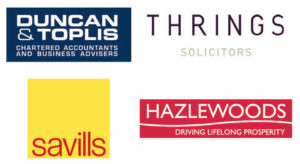Business Clinic: Should I switch from sheep to deer?
 © Hayley Parrott/RBI
© Hayley Parrott/RBI Whether you have a legal, tax, insurance, management or land issue, Farmers Weekly’s Business Clinic experts can help.
Here, James Worthington, consultant, Savills Food and Farming sets out what to consider when thinking of changing from lamb to venison production.
Q Is establishing a deer farming enterprise a realistic alternative to a lowland sheep flock?
A It is commonly reported domestic demand for venison is increasing rapidly due to it being perceived as a healthy alternative to red meat.
However the number of farmed deer in the UK has fallen from more than 50,000 in the early 1990s to just 31,000 in 2016, with the wild deer population providing 97% of the UK’s output.
Domestic demand is estimated to be growing at 10% a year and although the UK sources most of its additional venison from New Zealand (particularly out of season), New Zealand deer farmers are increasingly turning their attention to China and alternative high-value destinations.
See also: Business Clinic – advice on manure management plans
Venison shortfall
This implies there is going to be a shortfall, both seasonally (due to the restricted culling period for wild deer) and in volume, which potentially gives an opportunity to diversify away from traditional beef and lamb production and establish a profitable alternative.
In order to assess the potential of moving into deer farming it is essential to look at the anticipated financial returns for a low-ground deer farming enterprise compared with a typical cross-bred ewe flock.
Financial returns
The table below is based on annual costings from the SAC Farm Management Handbook and indicates that a low-ground red deer herd finishing all its progeny, can return an estimated £560/ha compared with £374/ha for a cross-bred ewe flock.
However a red deer herd selling calves at weaning (six months) returns just £229/ha more similar to returns on a more extensive upland farm where the land cost considerations would be.
At first sight the financial returns for a breeding/finishing deer herd look very attractive compared with a cross-bred ewe flock, but it is important to look at any downsides.
The gross margin calculation makes no provision for setting up costs. For a 100-hind breeding herd this is estimated at more than £50,000 to cover appropriate deer fencing, handling pens, winter housing/shelter and purchase of breeding stock.
Also, the domestic farmed deer venison market is still relatively new and with only two dedicated abattoirs (one in Fife and one in Yorkshire), transport and marketing costs can be significant.
Set up costs
On the upside, once a deer enterprise is established, overhead costs should be minimal compared with traditional livestock enterprises, with low demand for machinery and labour, with deer only requiring a few handlings a year.
There does appear to be demand for additional farmed venison production in the UK, but without grant support, set-up capital costs might be too high. Each devolved region has a different approach to this, so check what is available.
Gross margin comparison – red deer v breeding ewes |
|||
|
|
Cross-bred ewes |
Red deer |
Red deer |
|
|
|
Finishing |
Selling calves |
|
|
£ per ewe |
£ per hind |
£ per hind |
|
Net output |
95 |
210 |
74 |
|
Variable costs |
32 |
74 |
35 |
|
Forage costs |
17 |
34 |
14 |
|
Gross margin/head |
46 |
102 |
24 |
|
Animals/ha |
8.1 |
5.5 |
10.6 |
|
Stocking rate (ha/head) |
0.12 |
0.18 |
0.09 |
|
Gross margin/ha |
£374 |
£560 |
£229 |
|
Source: SAC Farm Management Handbook |
|||
Do you have a question for the panel?
 Outline your legal, tax, finance, insurance or farm management question in no more than 350 words and Farmers Weekly will put it to a member of the panel. Please give as much information as possible.
Outline your legal, tax, finance, insurance or farm management question in no more than 350 words and Farmers Weekly will put it to a member of the panel. Please give as much information as possible.
Send your enquiry to Business Clinic, Farmers Weekly, RBI, Quadrant House, The Quadrant, Sutton, Surrey SM2 5AS.
You can also email your question to fwbusinessclinic@rbi.co.uk.
